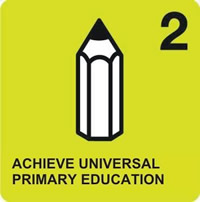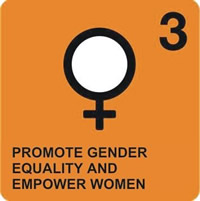
|
The Millennium Development Goals (MDGs) were established at the UN Millennium Summit in September 2000. The eight MDGs aimed to reduce poverty, hunger, child mortality and disease, and to promote education, maternal health, gender equality, environmental sustainability and global partnerships. The target date for achieving the MDGs was 2015. National Poverty Reduction Strategy Papers (PRSPs) provided the guiding framework for low-income countries in their efforts to attain the MDGs. A number of countries (including Cape Verde, Mozambique, Sierra Leone, Tanzania, and Uganda) integrated sport into their PRSPs. UN Secretary-General's video message about the need to accelerate action on the MDGs in the 1,000 days until the 2015 target date
|
|
|
|
|
|
|
1. Eradicate extreme poverty and hunger
|
 |
2. Achieve universal primary education
|
 |
3. Promote gender equality and empower women
|
 |
4. Reduce child mortality
|
 |
5. Improve maternal health
|
 |
6. Combat HIV and AIDS, malaria, and other diseases
|
 |
7. Ensure environmental sustainability
|
 |
8. Develop a global partnership for development
|
 |
|
|
|
Related Articles
-
-
More top footballers to join UNDP's 10th annual Match Against Poverty.
-
Goodwill Ambassador Hong Myung-bo praises Thailand’s HIV efforts.
-
Football unites international community in campaign to end violence against women.
-
UNICEF Ambassador in Serbia Novak Djokovic calls for investment in quality early childhood
education during his visit to a kindergarten. -
More more articles relating to the Millennium Development Goals, click here.
Related Documents
-
Download this factsheet on sports contribution to the Millennium Development Goals in .pdf format
-
For more documents relating to the MDG's, click here.









 World Tourism Organization
World Tourism Organization